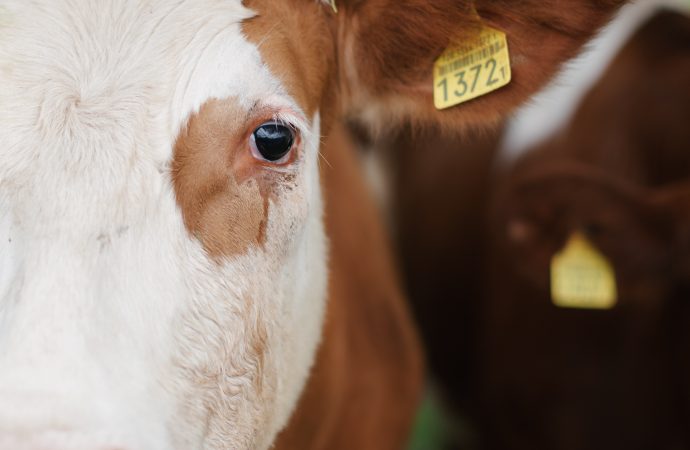Introduction: When we think of climate change mitigation, dairy cows are not typically the first thing that comes to mind. However, these bovine creatures that provide us with milk and dairy products are playing an increasingly important role in combating climate change. In this article, we delve into the surprising potential of dairy cows to
Introduction:
When we think of climate change mitigation, dairy cows are not typically the first thing that comes to mind. However, these bovine creatures that provide us with milk and dairy products are playing an increasingly important role in combating climate change. In this article, we delve into the surprising potential of dairy cows to contribute to climate change mitigation and explore the innovative strategies being implemented within the dairy industry.
- Understanding the Climate Impact:
Livestock farming, including dairy production, has been associated with significant greenhouse gas emissions, primarily in the form of methane and nitrous oxide. Methane, in particular, is a potent greenhouse gas that contributes to global warming. However, recent research has shed light on the potential of dairy cows to be part of the solution rather than the problem.
- Enteric Fermentation and Methane Mitigation:
Dairy cows naturally produce methane as a byproduct of enteric fermentation, the process by which their stomachs break down and ferment plant material. However, researchers and farmers are actively exploring methods to mitigate methane emissions from dairy cows. One approach involves modifying the cows’ diets to reduce methane production without compromising their health or milk productivity.
- Feed Additives and Diet Adjustments:
Innovative solutions are being developed to reduce methane emissions through feed additives and diet adjustments. For example, certain types of seaweed have shown promise in significantly reducing methane production in cows when included in their diet. Other feed additives, such as specific plant extracts or oil supplements, have also demonstrated the potential to lower methane emissions. By fine-tuning the cows’ diets, farmers can make strides in reducing the climate impact of dairy farming.
- Improving Digestion Efficiency:
Efforts are underway to improve the digestion efficiency of dairy cows, thereby reducing methane emissions. Researchers are investigating the use of probiotics and prebiotics to enhance the microbial activity in the cows’ digestive systems, leading to improved nutrient absorption and reduced methane production. By optimizing digestion, dairy farmers can minimize greenhouse gas emissions and improve the overall sustainability of their operations.
- Manure Management and Energy Generation:
Another aspect of dairy farming with climate-friendly potential lies in manure management. Dairy cow manure is rich in organic matter, which, when managed effectively, can be harnessed to produce renewable energy. Anaerobic digestion systems capture methane emissions from manure and convert them into biogas, which can be used for electricity generation or heating. This not only reduces greenhouse gas emissions but also provides a sustainable energy source for the farm and surrounding communities.
- Soil Health and Carbon Sequestration:
Dairy farmers are increasingly adopting practices that promote soil health and carbon sequestration, further contributing to climate change mitigation. Techniques such as cover cropping, rotational grazing, and no-till farming help build organic matter in the soil and enhance its ability to sequester carbon dioxide. By sequestering carbon, dairy farms can offset their own emissions and play a significant role in achieving climate goals.
- Precision Farming and Technology:
The adoption of precision farming techniques and advanced technologies is transforming the dairy industry’s sustainability efforts. Farmers are utilizing sensors, data analytics, and automation to optimize feed management, monitor cow health, and reduce waste. This approach maximizes resource efficiency, minimizes environmental impact, and enhances the overall productivity of dairy operations.
- Collaborative Efforts and Knowledge Sharing:
Collaboration among farmers, researchers, industry stakeholders, and policymakers is critical to accelerating progress in climate-friendly dairy farming. By sharing knowledge, best practices, and innovative solutions, these collaborative efforts foster continuous improvement and drive systemic change within the industry. Governments and organizations can provide support through funding research initiatives, incentivizing sustainable practices, and facilitating knowledge exchange platforms.
- Consumer Choices and Demand:
Consumers also have a significant role to play in promoting climate-friendly dairy farming practices. By making informed choices and supporting dairy products from farms that prioritize sustainability, consumers can create a market demand for environmentally responsible production. Certifications and eco-labels that highlight sustainable farming practices can guide consumers in making conscious purchasing decisions, ultimately encouraging more farmers to adopt climate-friendly approaches.
- Policy Support and Incentives:
Governments and policymakers play a crucial role in supporting climate-friendly dairy farming. By implementing supportive policies and providing incentives, they can encourage farmers to adopt sustainable practices and invest in technologies that mitigate greenhouse gas emissions. Policy measures such as carbon pricing, research funding, and grants for renewable energy projects can provide the necessary framework for the dairy industry to transition to more sustainable and climate-resilient practices.
Conclusion:
Dairy cows may seem an unlikely ally in the fight against climate change, but their potential for climate-friendly contributions should not be underestimated. Through innovative approaches such as diet adjustments, feed additives, improved digestion efficiency, manure management, and precision farming, the dairy industry is making strides in reducing its environmental impact. By implementing these strategies and collaborating across the sector, dairy farmers, researchers, policymakers, and consumers can collectively harness the surprising climate-friendly potential of dairy cows and pave the way for a more sustainable future.

















Leave a Comment
Your email address will not be published. Required fields are marked with *